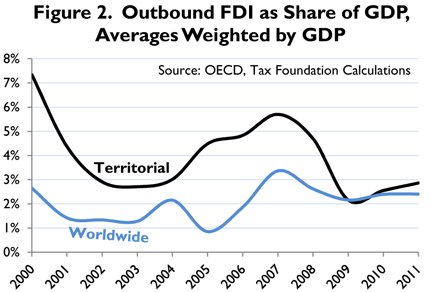New tax rules for nonportfolio foreign investments bringing the inbetweeners into line Tax New
Post on: 16 Март, 2015 No Comment

Do you hold an interest of 10% or more in a foreign company? If so, new tax rules contained in the Taxation (International Investment and Remedial Matters) Act 2012 may affect you.
This Brief Counsel explains how the new rules bring the taxation of these inbetweener non-portfolio foreign investments into line with recent international tax changes, and why taxpayers who hold such interests should act now.
Are you caught?
The new rules apply to taxpayers who hold interests of 10% or more in foreign investment funds (FIFs ). These are foreign companies that are not controlled by five or fewer New Zealanders. To date these inbetweener interests have been unaffected by the international tax changes that apply to FIF interests of less than 10% (portfolio FIF interests ) and interests in controlled foreign companies (CFCs ).
Calculating your income under the new rules
The new rules are a hybrid of the regimes that apply to portfolio FIF interests and CFC interests. A taxpayer who holds a non-portfolio FIF interest can generally choose to calculate their income from that interest under either:
- the attributable FIF income method. which is a slightly modified version of the method taxpayers apply to calculate their income from CFC interests. Under this method an investor will be taxed on:
- their share of the passive income (generally speaking, dividends, interest, royalties, rent and income from insurance) derived by the foreign entity (and potentially the passive income derived by other entities in which the foreign entity holds shares) if that income is at least 5% of the entitys gross income. An investor should be allowed a credit against the NZ tax payable on their share of the passive income for foreign tax paid on that income by the foreign entity. An investor will not be taxed on any active income (income that is not passive income) derived by the entity
- an unrealised attributed basis an investor is taxed on their share of passive income whether or not they have received a distribution from the entity
- dividends received from the foreign entity (with a credit allowed for NZ tax paid by the investor on an attributed basis), unless the investor is a company, or

If you hold a non-portfolio FIF interest in an Australian entity the new Australian exemption may apply. If it does, you will have no attributed FIF income from your investment. An investor who holds a non-portfolio FIF interest in an entity that qualifies for the Australian exemption will be taxed on dividends, unless the investor is a company.
Which method should you choose?
Your choice of method is important. Once you have chosen a method there is only limited scope to change methods in the future. You should consider:
- your income under each method. If you hold an interest in an entity that derives mainly active income then you may be better off applying the attributable FIF income method. Conversely, if you hold an interest in an entity that derives mainly passive income then you may be better off under the FDR or cost methods
- the availability of information. You can only apply the attributable FIF income method if you have sufficient information to perform the necessary calculations. Ideally you will have access to unqualified, audited financial statements prepared for the entity under IFRS or US GAAP, which will allow you to apply a simplified active business test. If such accounts do not exist, or you do not have access to them, the compliance costs involved in applying the attributable FIF income method may be considerable
- the outbound thin capitalisation rules. If you choose to apply the attributable FIF income method or the Australian exemption applies, you will be subject to the outbound thin capitalisation rules. To date these rules have only applied to taxpayers who hold CFC interests. Under the outbound thin capitalisation rules you may effectively be denied a deduction for a portion of your interest expense if your New Zealand balance sheet is highly geared, subject to various safe harbours. This complex area of the law requires careful consideration.
Act now
The new non-portfolio FIF rules apply to income years beginning on or after 1 July 2011. That means the rules are already in effect for most taxpayers. You should therefore act now and consider the impact of the new rules on your next provisional tax payment and your tax return for the current income year. We would be happy to assist you.
The information in this article is for informative purposes only and should not be relied on as legal advice. Please contact Chapman Tripp for advice tailored to your situation.
To print this article, all you need is to be registered on Mondaq.com.
Click to Login as an existing user or Register so you can print this article.














